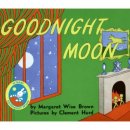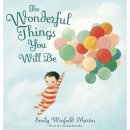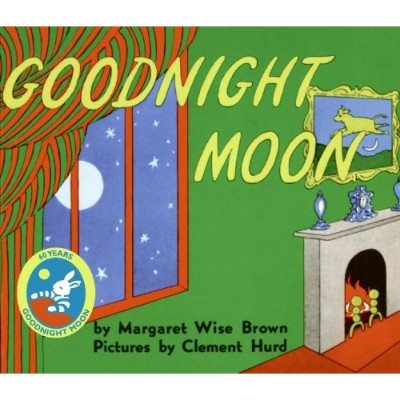10 Best Books for 3 Year Olds in 2024
It should be no surprise that your child will need to know how to read in order to succeed in life. Almost everything we do involves some form of reading. If your little one is too young to read, you can foster a love of books in them by reading to them. Their imaginations will soar with every page turned.
Reading will allow your child to visit mystical lands and enjoy wild adventures from the comfort of their bedroom. They will learn about places and people..Their vocabulary will increase whether they are reading or being read to. Since we’ve already provided you with several benefits, we’ll let you move on to our list of the 10 best books for 3-year-olds.
In a Hurry? The test winner after 16 hrs of research

No electronics are needed.
The hardcover and board book versions are available online for purchase.
It is ready to go once out of its box.
Large images make it easy for parents or grandparents with vision problems to see.

10 Best Books for 3-Year-Olds Reviewed
1. Press Here
No electronics are needed.
The hardcover and board book versions are available online for purchase.
It is ready to go once out of its box.
Large images make it easy for parents or grandparents with vision problems to see.
The book is not crayon proof. Kids need to learn that this book is not a coloring book.
Press Here is a simple but interactive book that toddlers and tots in the early childhood stages will love. Parents and kids can use their imagination and the power of their pointer finger to multiply the dots on the page, make them change color, and more! The tactile element of this book makes it a great option for kids who aren’t ready for involved narratives or long tales yet.
Read moreEntertainment Value
Each page is filled with interactive activities that will ask your kid to press a dot, shake the page, or even tilt the Press Here. What happens next is pure excitement as kids will grow in anticipation.
Ease of Use
As you read aloud the instructions on each page and flip the pages, the dots increase in number, grow in size, and change direction. It’s all about using one’s power of imagination and when this is mastered by a 3-year-old, the possibilities are simply endless.
Educational Value
A fun and interactive activity, watch kids as they become antsy to participate after each flip of the page. This toy stimulates their minds and increases self-esteem as they figure out how to accomplish directions. A stronger bond will be created as parents and children learn to collaborate through the pages.
Age Range
Chronicle Books (the publisher) recommends this for children between the ages of 3 and 5. The vocabulary is simple enough that children can grasp the words and read along with their parents, plus it’s interactive to help hold young attention spans.
2. Goodnight Moon
Great Illustrations
Teaches them to read
Teaches them common household objects
Helps them get to sleep
Will lose its entertainment value once they have the story memorized
Put those sweet little sleepyheads on their pillows and wrap them up tight; Goodnight Moon is just the bedtime story to help kids get ready to enter dreamland. The adorable bunny tucked into its bed says good night to the moon, room, and various familiar and beloved objects in the room. The language is simple and repetitive to help lull your sweet peas into sweet dreams.
Read moreEntertainment Value
This classic children’s book is perfect for three-year-olds, helping them to learn the names of common objects around the house. The illustrations are helpful in teaching them about their immediate surroundings, giving them the chance to identify and find the mittens and kittens as you read them this story. This is a great book for getting them to speak and read more quickly and will entertain them for endless hours.
Ease of Use
This book is designed to help them get to bed at night, to lull them easily into sweet dreams as you read the story to them.
Educational Value
As you read them this book, kids will also begin to learn the names of common objects and animals, making it exceptionally educational.
Age Range
Harper Festival suggests this book for children between 1 and 4 years of age. The use of the same basic sentence structure and phrases helps kids to recognize letters and the sounds they make, and the story is short and simple enough not to lose young attention spans.
3. The Going-To-Bed Book
Encourages memorization
Easy to absorb
Available as board book or e-book
Made of sturdy materials
The story line is a bit strange because the characters exercise after bathing and dressing down for bedtime.
Trying to establish a bedtime routine? The Going To Bed Book helps kids get in order for tucking-in time. The animals in this delightful romp take their baths, brush their teeth, hang their towels, find their pajamas, and go to bed without a fuss. The rhyme scheme and adorable illustrations make it a fun and gentle read before bed.
Read moreEntertainment Value
The sweet and very comforting stories presented in a rhyming pattern in The Going-to-Bed Book make for a superb bedtime story for 3-year-olds. It’s entertaining and an excellent take on the different activities that we do before going to sleep and calling it a night.
Ease of Use
The simplicity of the text can easily be absorbed by the minds of young children.
Educational Value
This book is wonderful because it helps put kids to bed. It is so well made that kids are willing to brush their teeth, get into their p.j.’s and climb into bed if they want their parents to read this book to them.
Age Range
The publisher (Little Simon) recommends this book for children between 2 and 5 years old. The basic language is easy for them to understand and the rhyme scheme helps them to understand and associate the sounds certain letters make when grouped together: an important milestone as they learn to read.
4. Where Do Diggers Sleep at Night?
Tiny kids can understand which trucks are the mommy, daddy and baby truck.
The book is available as a board book and e-book through Kindle.
Boys and girls enjoy this book.
The book is sturdy and well-made.
This book is not a representation of the popular T.V. show.
Rounding out our collection of bedtime stories is Where Do Diggers Sleep at Night? A group of construction vehicles on their construction site get ready to sleep while the little tractors and diggers beg for one more story and the mommy and daddy vehicles sing them to sleep. If you have a car-crazed kid on your hands, this is just the book for them.
Read moreEntertainment Value
The storyline is actually a reflection of what children all over the world ask their parents every night: if they can have just one more story before bedtime. It’s an excellent introduction to the value of bedtime stories. The graphic illustrations of the fire engines, monster trucks, and even tractors help add excitement to the story.
Ease of Use
Kids will ask parents to read them this book every night. The pictures are colorful and clear enough that it’s easy for kids to interpret what is going on in the story.
Educational Value
The bond this book creates between parent and child becomes stronger as kids start to understand that their parents are not picking on them because everybody has a bedtime.
Age Range
Random House Books suggests this story for children between the ages of 2 and 5. It has lots of pictures, and easy-to-follow storylines and it features talking cars, which are extra appealing to plenty of young readers.
5. The Giving Tree
Encourages generosity and selflessness
Composed of simple illustrations
Geared towards children between the ages of 1 to 8
Bright colors on the cover will excite readers
The boy’s actions can be interpreted as greedy
The Giving Tree is a classic. Originally published in 1964, this story about a tree’s unconditional love for the boy she grows beside has stood the test of time. It features simple illustrations without a wealth of color to truly put the focus on Shel Silverstein’s words and the heartfelt message of this tale.
Read moreEntertainment Value
The bright green and red colors on the cover will have your child excited to open the book. The simplicity of the illustrations adds to the beauty of the message. The wonderful story will engage your little ones and they will want to re-read it over and over again.
Ease of Use
The vocabulary can easily be understood by children under the age of 8.
Educational Value
In this classic tale, the reader will learn generosity and selflessness as they watch the tree give the little boy everything out of love.
Age Range
Harper & Row give this a broad age range, as it spans children between 1 and 8 years old. It’s simple and elegant, giving it a wide appeal to many children and even plenty of adults.
6. The Wonderful Things You Will Be
Displays diversity
Encourages children to make a positive impact
Rhyming text can easily be understood by small children
Hardcover will keep the pages secured inside
Some reviewers feel as though the storyline is more for the parents
The Wonderful Things You Will Be is as much a treat for adults as it is for kids. This beautiful book is sincere, warm, at times humorous, and filled with lush illustrations the whole way through. It discusses the love and hope parents feel when they look at their children and all of the millions of possibilities ahead of them.
Read moreEntertainment Value
In her book The Wonderful Things You Will Be, Emily Winfield Martin encourages young children to be kind, loving, creative and brave. The 36 pages are bound together by a hardcover, thus making it durable enough to last for years to come.
Ease of Use
The rhyming text can easily be understood by children between the ages of 3 and 7.
Educational Value
Martin also illustrated the book with beautiful illustrations that display a variety of ethnicities in both genders. In fact, she stayed away from the typical stereotypes of girls being princesses and boys being superheroes. For instance, the reader will see a boy having a tea party and using a sewing machine. The positive messages printed on each page will encourage your child to be the best version of themselves as they grow.
Age Range
Random House suggests this book for children between the ages of 3 and 7. It has a fun rhyme scheme and manages to be simple but still full of detail and feeling.
7. The Story of Ferdinand
Great plot, great message
Classic art and children’s literature
Simple wording, perfect for reading to young children
Includes original texts and illustrations
Probably won’t be the first book they can learn to read.
The Story of Ferdinand was first published in 1936 and remains, to this day, a favorite in many homes. It’s the story of a bull who doesn’t quite fit in with his peers, as he’d rather sit and smell the flowers than butt heads or fight. His temperament is put to the test when he’s chosen for a bullfight in Madrid. This edition features the original illustrations and text.
Read moreEntertainment Value
The story of Ferdinand touches on some of the most important interaction points for small children, giving them the image of a powerful bull who is primarily peaceful and interested in flowers. The social mechanisms in this book are made to help children avoid becoming bullies and to properly sort out their issues among their peers, giving them a better chance at social success. This is a classic children’s book, and one that shouldn’t be undersold on its potential values for young readers.
Ease of Use
Geared specifically for three-year-olds, the words are simple to read and the plot is easy to understand.
Educational Value
This book provides an important message for your child as they become more social. This book will help them to understand that good characters don’t exert force because they can, but rather they seek to use love to understand the world around them.
Age Range
Viking Books is marketing this story towards children between the ages of 3 and 5. The illustrations are all in black and white but the story is captivating and told in language that this age group can comprehend.
8. Dragons Love Tacos
Available in Kindle and hardcover.
A New York Times bestseller.
Amazon’s editor’s best kid’s book of the month.
A great gift for parties
The book uses the words, ‘I hate’, several times. Not all parents want to teach their kid to get used to using the word ‘I hate’.
It shouldn’t come as a surprise that Dragons Love Tacos because really--who doesn’t? But what dragons don’t love, apparently and ironically, is spicy salsa. This whimsical best-seller features colorful, full-page illustrations and a silly plotline that little ones can giggle through again and again.
Read moreEntertainment Value
The Dragons Love Tacos is a wonderful take on every child’s dream creature but done so in a very lighthearted manner, full of wit and laughter. The story simply talks about building friendships with dragons doing it over a bowl of tacos. Now, we all know that kids don’t necessarily like tacos especially the super spicy ones. But the point of the story is that dragons, while they do love tacos, also don’t really want a taste of the salsa as this can really drive them fire-a-breathing.
Ease of Use
The fun storyline and cartoonish illustrations make this story easy to follow for three-year-olds.
Educational Value
Through an engaging and lighthearted story, children learn the importance of stepping outside their comfort zone and accepting others. A hilariously engaging story, kids will learn to have a sense of humor while reading through this book.
Age Range
Scholastic hasn’t put an official age range on this book. Consulting the reviews of other parents who have purchased this though, we would suggest a younger audience. It doesn’t have the flow and narrative that older children will start to look for in their reading material.
9. The Monster at the End of this Book
Amazon best-seller
Concise plot; easy to understand
Classic children’s literature
E-book version available
The art style has not been upgraded
This Little Golden Book stars Grover, the lovable Sesame Street character! He begs and begs readers not to keep turning the pages, warning them that there’s a monster at the end of the book. It turns out the monster is just Grover, though--and all ends on a happy, silly note. Many parents may remember this beloved book from their own first days of reading.
Read moreEntertainment Value
Three-year-olds will surely have fun going through each page as if Grover himself is actually talking to them. For parents who have been weaned off such books, it will simply be nostalgic. We’re sure it’ll bring a smile to your face.
Ease of Use
The storyline is easy to follow by toddlers.
Educational Value
A great intro into the scary book/movie genre, kids will learn what it is like to feel antsy and at the same time a little bit scared. They’ll feel joy as they courageously allow mom and dad to flip the pages and see the potential monster. At the end of the book, kids will feel relief and pride that they were able to make it through.
Age Range
Golden Books published this book with the 3-7 year old demographic in mind. It’s filled with a vocabulary that is challenging but appropriate for beginning readers so they can start to sound words out all on their own.
10. Brown Bear, Brown Bear, What Do You See?
Great ‘first book’ idea for children
Kid-friendly artwork
Introduces them to several animals
Teaches the basics of rhyme and sentence structure
Doesn’t have much of a plot; best used to teach them
Sing-songy and filled with bright, beautiful pictures, Brown Bear, Brown Bear, What Do You See is just right for little readers learning about animals or adjectives. This book bursts with melodic language and a cast of beautifully illustrated animal pals your family can revisit over and over again.
Read moreEntertainment Value
This is a classic kids' book that has been around for a long time. We love the nostalgia it brings parents as we read this to our children before bedtime. It is also a great kids' book in general and has withstood the test of time.
Ease of Use
This book employs rhyme and visual cues perfectly to help your child learn new words and how to connect them in sequence. Help them learn the names of several wild animals and features with this simple, response-driven children’s book.
Educational Value
This book will help your child learn the names of various animals in addition to teaching them the basics of spelling and rhyme. If you remember this classic from your childhood, it is also a way for you to connect your child to your own childhood.
Age Range
This book is targeted towards children between 2 and 5 years of age. It’s simple enough that two-year-olds can enjoy the sound of your voice, the sing-songy words, and the pretty pictures. But it also contains important words for children around 5 to start reading and writing for themselves.
Criteria Used for Evaluation

Entertainment Value
All of the books on this list were chosen for their entertainment value. Each book features and excellent storyline, but also beautifully done illustrations, drawings and writing. For example, in “Dragons Love Tacos,” kids will be delighted by the wonderful story of dragons, but also the illustrations of dragons. The storyline is funny and kids will giggle as you read the story in a range of voices. Books like this are the perfect way to get little ones hooked on reading at a young age.
Books can inspire creativity and imagination. Books are great resources for kids to dream of far off places and distant lands. They can imagine that they are kings or queens, or even that they are in space. Books have an infinite amount of creative potential. Some books might even help your little one decide what they want to be when they grow up - whether it be a doctor, an astronaut, explorer or vet!

Ease of Use
The good thing about children who are already in their third year is that their vocabulary is already rapidly expanding. They already know quite a lot of words and their rudimentary meanings. While they may not yet be able to fully read what is written, we can nonetheless read to them. Because of their more-developed cognition compared to a 2 year old, they can now begin to have a clear understanding of the essence of the story.

Educational Value
Literacy is crucial to the process of cognition for your child: it will be the simplest way for them to obtain their own information and form their own opinions and conclusions in the future. Knowing this, it is of the utmost importance that we do everything we can to teach our children to read at a competent level at the soonest possible date. Children can actually learn to speak and read very quickly in some circumstances, and there are even signal languages that can be used to communicate with infants before they can actually form the necessary muscles and coordination to speak.
When reading to your toddler, you will better catch their attention by making the experience interactive. For example, have them make an animal noise when they see it on the page.
Toddlers have a shorter attention span than babies. Choose books with text that is short and simple.
Books are a great way to help 3-year-olds learn how to read. Start with books that have a lot of pictures and small words. The pictures help little ones connect words to what they mean. This is a great introduction into the wonderful world of reading.
Other Factors to Consider

Emotional Development
Reading to your child can be beneficial for their emotional and physical health. Even reading to your child in the womb can excite your unborn child because he or she is hearing your voice. For emotional health, children can learn valuable lessons from books. They can learn to care for others or how to share; they can learn how to be compassionate. The list goes on and on. Books that are interactive can help with physical health, so children can turn pages or get up and dance when the book says so.
Books have a wonderful way of teaching little kids valuable lessons. Whether it is a story about a tree giving everything it has to a little boy in Shel Silverstein’s “The Giving Tree,” or a story about a household saying goodnight, books can help children develop emotionally. Books can teach kids how to share with each other, support each other and care for other people. It is extremely important for kids to develop emotionally and accept and handle the emotions that they are feeling. Books can teach them how to do this.
Frequently Asked Questions
q: How soon should parents start reading to their kids?
According to the American Academy of Pediatrics, parents should start reading to their kids as soon as they are born. Kids who are exposed to reading at an early age do better in several categories. Children become more attentive in their studies, are better at critical thinking problems and can get through kindergarten easier.
q: Why is it important to learn to read?
Reading is an important part of daily living. Reading is used to fill out job applications, reading road hazard signs, reading medicine bottles, the list goes on. Several adults never grasped the concept of reading. As a result, they struggle to live a normal life. Reading also helps develop the mind. Teaching children to read helps them develop their language skills and learn to listen.
q: Why is it important for young children to read books?
Parents who want to give their children the best chance in life will help them learn valuable skills. One of those priceless skills is reading. Children who read have a much higher success rate in almost all aspects of life, such as graduating from school and career success. Reading helps stimulate intellectual development and expand their vocabulary.
q: What are other benefits to reading aloud to children?
When parents read aloud to their kids, it strengthens their bond. Reading aloud also helps encourage kids to learn to love books and reading. Reading aloud to children also helps to minimize the amount of time they spend in front of a computer monitor and other electronic devices as they get older.
q: Do kids benefit from picture books?
Yes, kids benefit from picture books. Picture books engage conversations between the reader and child. Kids will start to ask questions like what is happening in the story and who are the characters in the pages. These types of books stimulate visual thinking skills and help children become better listeners as they develop.
Sources
- , This is your child's brain on reading, Online
- , Why Is Reading Important?, Online Article
- , Why Should Children Read?, Online Article
- , Why Read Aloud?, Online
- , Why Picture Books Are Important , Online























































